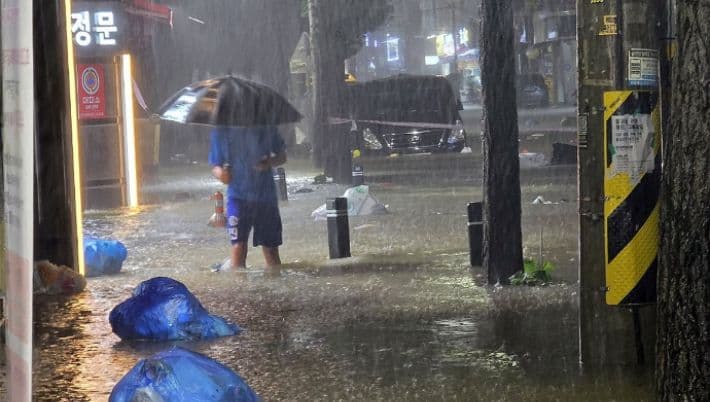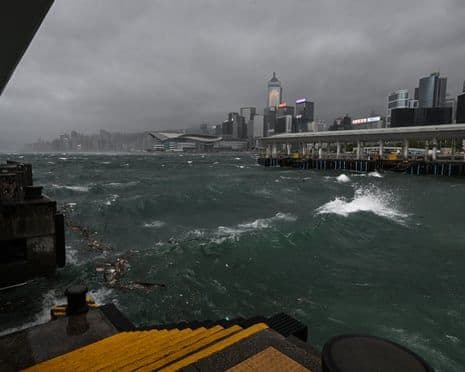Weathering the Unprecedented: The Human Story of Adapting to Climate's Fury
Unpack the hidden costs of extreme weather. Discover how unprecedented deluges are reshaping lives, threatening agriculture, and driving urgent calls for climate resilience.

Opening the Floodgates: A World Remade by Rainfall
Across , the skies have opened with a relentless fury, transforming familiar landscapes into scenes of devastation. Recent torrential rains have not merely been a nuisance; they've been a catastrophic force, claiming lives, displacing thousands, and submerging vast tracts of land. Reports from across the nation paint a grim picture: four individuals tragically lost their lives, with one still missing, as record-breaking downpours overwhelmed communities. In , a city typically prepared for seasonal deluges, flood advisories and warnings have been a constant presence, with areas like recording over 85mm of rain in a single morning. Major thoroughfares and 29 city rivers were shut down, paralyzing urban movement and underscoring the immediate, widespread disruption. Beyond the visible chaos, the hidden dangers of infectious diseases loom in waterlogged areas, adding another layer of concern for the 7,000 individuals temporarily evacuated from their homes. This isn't just a weather event; it's a profound reshaping of daily life, forcing us to confront a new, more volatile reality.

Fields Under Siege: The Devastating Toll on Agriculture
While cities grapple with flooded streets, the agricultural heartlands bear the brunt of an invisible, yet equally destructive, tide. The sheer scale of the damage is staggering: an estimated 18,000 football fields worth of crops have been submerged nationwide. Farmers, whose livelihoods are inextricably tied to the land, face heartbreaking losses. , a 51-year-old farmer in , watched helplessly as her zucchini greenhouses, cultivated diligently even through heatwaves, were swallowed by floodwaters reversing from drainage channels. Her despair is echoed by grape farmer in , who fears the delayed onset of fruit cracking, a silent killer that can wipe out harvests days after the rain stops. From watermelons in to chili peppers and strawberries in , and melons in , the diversity of affected crops highlights the pervasive nature of this crisis. It extends beyond crops, too; in , lost 46 of her 70 cows, while in saw 38,000 young chickens perish in his submerged poultry farm. This isn't just economic loss; it's the erosion of generations of hard work and the very foundation of rural life.

Beyond the Forecast: Understanding Climate's Shifting Moods
The recent deluge isn't an isolated incident but a stark reminder of our planet's increasingly unpredictable temperament. What makes these events so challenging isn't just their intensity, but their frequency and the complex interplay of climatic factors. Consider , a community that has suffered severe flooding three times in just seven years – in 2017, 2023, and now this year. This recurring pattern signals a significant shift from historical weather norms, indicating that what was once considered extreme is rapidly becoming the 'new normal.' The rapid escalation and de-escalation of heavy rain warnings in metropolitan areas, with hourly rainfall rates swinging dramatically, further underscore the volatility. Moreover, the insidious combination of heavy rainfall followed by scorching heatwaves, as feared by farmers like for his submerged soybeans, creates a compounding disaster, stressing crops and ecosystems in ways previously unimagined. These aren't mere weather patterns; they are the discernible symptoms of a climate in flux, demanding a deeper understanding of its evolving 'moods.'

Rebuilding in the Wake: Strategies for Enduring the New Normal
As communities begin the arduous task of recovery, the question isn't just 'how do we rebuild?' but 'how do we rebuild to withstand the next onslaught?' For many, the thought of yet another recovery effort, as expressed by those facing 'water bombs becoming daily,' is overwhelming. This calls for a multi-faceted approach to resilience. Immediate actions include rapid disaster relief, ensuring public health through strict hygiene protocols in affected areas, and providing immediate financial and technical aid to devastated farms. The 's initiative to conduct technical demand surveys for flooded crops like rice, soybeans, and facility fruits is a crucial step towards tailored support. Looking long-term, strategies must pivot towards proactive adaptation. This involves investing in climate-resilient crop varieties, upgrading aging drainage and irrigation infrastructure, and developing sophisticated early warning systems that can predict not just rain, but its precise impact on vulnerable agricultural systems. Local governments, like , are already mobilizing 'full effort' to minimize damage. It's about empowering individuals with practical knowledge, like checking circuit breakers for leak prevention, and fostering community-wide preparedness. Building resilience isn't just about recovering; it's about fundamentally transforming how we live with an increasingly volatile climate.
Related Articles

South Korea's Shifting Skies: Navigating an Era of Extreme Weather

South Korea's Shifting Skies: Navigating an Era of Extreme Weather

Decoding the Dual Extremes: Korea's Summer of Sweat and Storms

Decoding the Dual Extremes: Korea's Summer of Sweat and Storms

Weather Whiplash: Navigating Korea's Shifting Summer Skies

Weather Whiplash: Navigating Korea's Shifting Summer Skies

The Human Equation of Extreme Weather: Adapting to Nature's Shifting Moods
